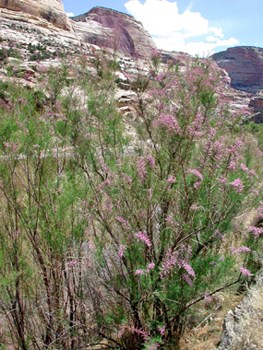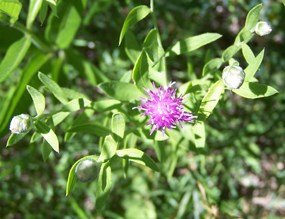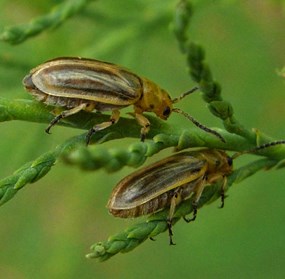|
Called exotics, aliens, non-indigenous species, and weeds, the most aggressive non-native plants spread quickly into undisturbed as well as disturbed areas. These invasive plants often cause irreparable damage by upsetting the ecological balance plants, animals, soil, and water have achieved over many thousands of years. 
NPS Introduction of Non-native Plants at Dinosaur The first settlers to the area arrived in the mid-1800s, established homesteads and ranches, and introduced some of the first non-native plants--grown for livestock forage--to the area. Development of roads, campgrounds, trails, boat ramps, picnic areas, and visitor centers in the 1960s further contributed to the establishment of non-native species. 
NPS Managing Invasive Plant Species 
NPS Invasive Riparian Weeds The rate of invasion is slower on the unregulated Yampa than on the altered Green. The relatively natural hydrograph enjoyed by the Yampa not only helps slow the spread of invasive plants, but it also improves the chances for successful restoration after weed removal. The Yampa also improves conservation and restoration potential on the Green below the confluence. |
Last updated: December 4, 2022
